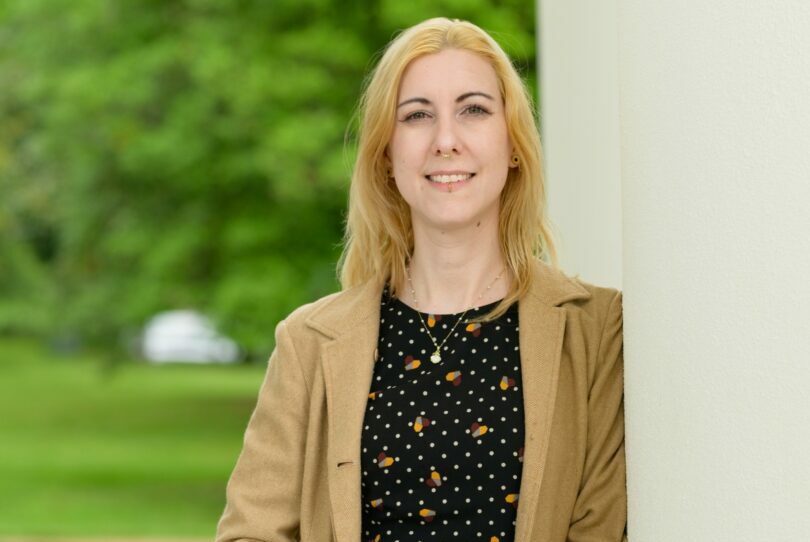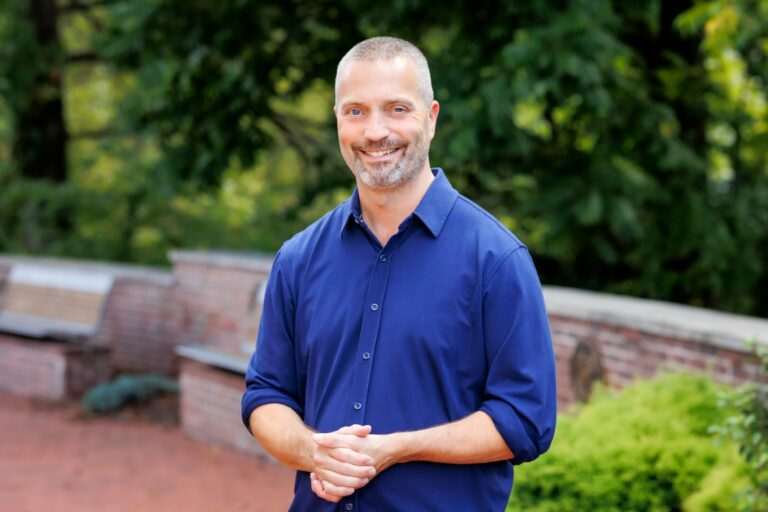We were lucky to catch up with Sara Campos recently and have shared our conversation below.
Hi Sara, really happy you were able to join us today and we’re looking forward to sharing your story and insights with our readers. Let’s start with the heart of it all – purpose. How did you find your purpose?
I’ve worked as a lawyer, writer, and currently as a program officer for a philanthropy. Immigration is a through-line of much of my work. It is definitely a major theme in my life. But purpose is more than a job; it is a reason for being.
I came to my purpose obliquely, the way a lot of things become clear in life. It began with Marge Piercy’s poem, “To Be of Service.” I don’t remember when I first read it; I just know that I immediately loved it. Once, while working on a fictional story, it occurred to me that the poem completely captured my protagonist. She took care of things, did things that needed to be done, regardless of pay or the difficulty involved. She didn’t fear getting her hands dirty. I admired her. I met so many immigrant women like her.
Another time, I was walking through a photo journalism exhibit in Washington D.C. In text surrounding his photos, a photojournalist wrote about his work in Vietnam. He said he never clocked in anywhere. He just walked about doing what needed to be done. The comment struck me. I might have had an office job back then and had a hard time fathoming such an open-ended way to work.
Years later, l was working with a cohort of program officers from different philanthropies. The facilitators asked us to share our life purpose. The poem immediately came up. I realized being of service was my purpose.
What does “being of service” mean for me?
It’s not a job, though it can often involves my current occupation. It’s using my skills in whatever ways might help people. It can involve using my extensive network to connect someone to a job lead, or reading a manuscript for a friend and providing feedback, or recommending grant money to a nonprofit. Even writing, at least the kind of writing I do, is a form of service. I hope to tell stories of people who aren’t in the limelight, stories we don’t hear about, or that we only hear stereotypes about–folks like the immigrants I have met for most of my life.
Being of service doesn’t mean doing everything people ask me to do, but it does mean using service as a sort of guide for how I spend my time. It goes beyond my job.
Lest you think this is altruistic, it is only partly so. Usually, when I extend myself and perform some service, I gain far more than I give. I learn valuable lessons and gain insights. Working in philanthropy is a privileged place to be. Being in service helps shed that layer of privilege, if only a little bit.

Thanks for sharing that. So, before we get any further into our conversation, can you tell our readers a bit about yourself and what you’re working on?
I grew up in San Francisco, the first-born daughter of immigrants from Guatemala and El Salvador. My parents came in their late teens and many family members followed. Our house became a kind of immigrant half-way house as family members and acquaintances from their home towns visited, learned English, and sometimes settled in the U.S.
One of the people who lived with us was my mother’s cousin. He arrived before I entered kindergarten.He was a teen and a gifted artist. I spent hours watching him sketch. He taught me how to draw lips and helped me see the ridges. He showed me art books. One of them contained pictures of Greta Garbo alongside the rutted face of a Native American elder. The older man is more interesting, he told me. Don’t go for easy. See what’s beneath. The older man’s face tells a story.
Drawing and painting became my passion. Throughout elementary school and high school, I was the class artist, the one charged with drawing covers for school pageants and events, But I also had a fascination with words. By fourth grade, I decided I wanted to write a book. I loved stories. I was a nerdy kid and sometimes looked for interesting words in the dictionary, just for fun. I was a good student but also a dreamy one–dwelling in my imagination. In high school, in addition to spending hours in the art studio, I wrote poems, romantic ones with florid lines–embarassing ones that the teacher often read aloud–to my mortification.
Yet, when i went to college, I pivoted. I set aside my art, thinking I’d never make it as an artist. Perhaps I didn’t trust myself or my abilities. I studied psychology and later worked for a crisis intervention center. But the role that I eventually inhabited was that of public relations–not that my job description stated it. I wrote newsletters, brochures, and other materials for the organization.
That job landed me another job for a national civil rights organization where I became the press officer. I wrote press releases and fact statements about lawsuits and public policy issues. I enjoyed working on issues and eventually went to law school–a far distance from the artist I once was.
Most of my legal career was devoted to working with immigrants. I defended migrant farmworkers in a conservative region of the country; I directed an Asylum Program for a civil rights organization, and I later worked as a staff attorney for a national immigration center.
It was during the civil rights job that my need to write became acute. I had been representing a woman from Sri Lanka who’d been raped in front of her children. She’d taken an incredible odyssey across several countries and arrived with a fake passport. When she arrived at the SF Airport, she collapsed and was taken away on a gurney as her horrified children watched. Later they detained her and her children–separately. I was incensed and had to write about it. I ended up publishing a piece in our local paper.
The experience stirred something in me. Although I wrote a fair amount as a lawyer, I hadn’t written memoir or fiction. Stories started coming to me and I eventually had to begin writing fiction. It felt totally freeing.
Eventually, I left law, raised kids, attended an MFA program, and began free-lancing consulting. The projects often involved writing and immigration and I went back and forth between working for advocacy organizations and philanthropies. Ultimately, I took a permanent position with a philanthropy, managing a portfolio on immigration rights.
While I was doing consulting, one of my writing instructors approached me with some immigration questions concerning unaccompanied immigrant children. It was around 2014 and many young people were arriving in the Bay Area. My instructor/friend had recently completed a first draft of her novel about a DREAMer, a young Guatemalan man who’d lived most of his life in the U.S. but was undocumented and deported back to his original homeland. The novel is a journey story in which he makes his way back to the U.S.
My writing friend had set aside the novel and had decided to teach a creative writing class at a local high school, perhaps to absorb the student’s youthful energy and infuse it into her own writing. Yet, none of the students in her class could write, not because they hadn’t mastered the mechanics of it–though that was part of the problem–but because most of the students were severely traumatized, recently arrived youth from Central America. All had made the treacherous journey to the U.S. alone. Although none of them could write, when she interviewed them, their stories began spilling out. All had suffered some sort of abuse, and feared returning to their home countries. They’d lost parents, siblings, friends. Some had endured rape,
When my friend reached out to me, it was to understand the immigration process, but after spending some time, we decided to collaborate. She felt duty-bound to share the stories in some way and we decided to produce a website. Out of the partnership grew the New American Story Project, a website containing stories of unaccompanied immigrant children. In addition to their oral histories, we presented interviews of immigration lawyers, judges, scholars, and other country experts, providing videos when we could and monologues when we could only obtain declaration. We also designed artwork for posters and banners that we hung in different parts of the Bay Area. Our aim was to educate the public about these children and why they had come. We are currently working on a constellation of stories surrounding Haiti.
Today, immigrants face enormous challenges. Politicians demonize them and use the as political fodder. The general public is fatigued with them too. Yet, displacement is at an all-time high, especially in the Americas. Never in my decades of immigration work, has the whole western hemisphere been inflamed. Migrants are arriving at the southern border from South America, the Caribbean, Central America, and Mexico, not to mention Russia, China, and numerous African countries. They are fleeing wars, extreme poverty, and persecution. Many want to be reunited with loved ones already in the United States. Some are like America’s ancestors who came for a better life. Yet, the public is done with them and wants to shuts it doors and deport everyone away, even people who’ve lived in the U.S. all for decades,, in the case of DREAMers, most of their lives.
I am working with other like-minded grant makers as well as other artists, strategizing ways to preserve immigrant rights as best as we can, and using story telling project, including my own fiction writing, to educate the public, and perhaps create a more hospitable environment.

There is so much advice out there about all the different skills and qualities folks need to develop in order to succeed in today’s highly competitive environment and often it can feel overwhelming. So, if we had to break it down to just the three that matter most, which three skills or qualities would you focus on?
Of course, academic skills like reading and writing are tremendously important for any type of work. I’d advise people who want to improve in these areas to read as much as they can. They don’t need to read the so-called western cannon or literature. Read what’s most interesting to them. I think it was Faulkner who advised to read anything and everything.
Critical thinking skills are essential too, especially in this era of widespread misinformation. People should judge for themselves, but they should pay attention to their sources.
But there are other skills that people don’t talk much about–like listening, especially listening to your gut. Listen to that inner voice that whispers and guides you. Listen for what moves you and think about how you might do it. Reach out to people engaged in that endeavor and talk to them. Find mentors or like-minded people who want to engage in it.
If you don’t pay attention to your passions, they will come back to haunt you. Mine certainly did.

All the wisdom you’ve shared today is sincerely appreciated. Before we go, can you tell us about the main challenge you are currently facing?
My biggest challenge is fitting everything in. In addition to being a partner, mother, and friend, I work on difficult things: I’ve been writing a novel for a long time and I work on the immigrant rights movement. Both require concentrated time and focus. I’m a list maker and I create lists of all the things I need to do. Each day, I look at my list of tasks and prioritize them. While this is helpful in my professional job, it is harder for the writing. A long time ago, a writing teacher told me that writing is about showing up and persevering. She also suggested I should do my writing first. Most mornings, therefore, I rise early, do my spiritual practice, and write. I’ve been doing this for years. Last year, I hired a coach. Each week, I discuss my writing tasks with her. The following week, I review what I have accomplished and what remains to be done. She helps me keep myself accountable.




so if you or someone you know deserves recognition please let us know here.




